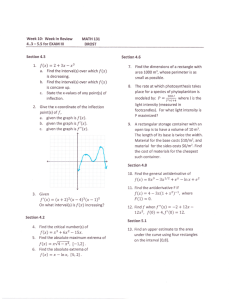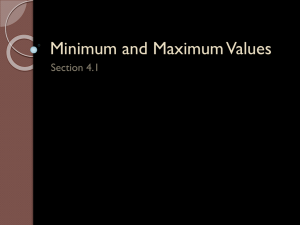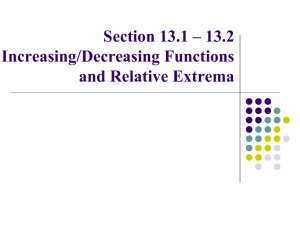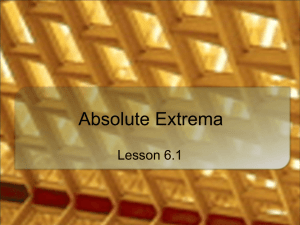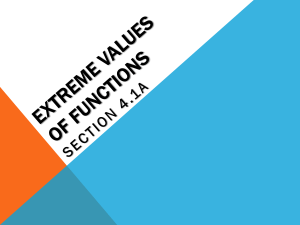3.1 Extrema on an Interval Objective: Understand the definitions and
advertisement
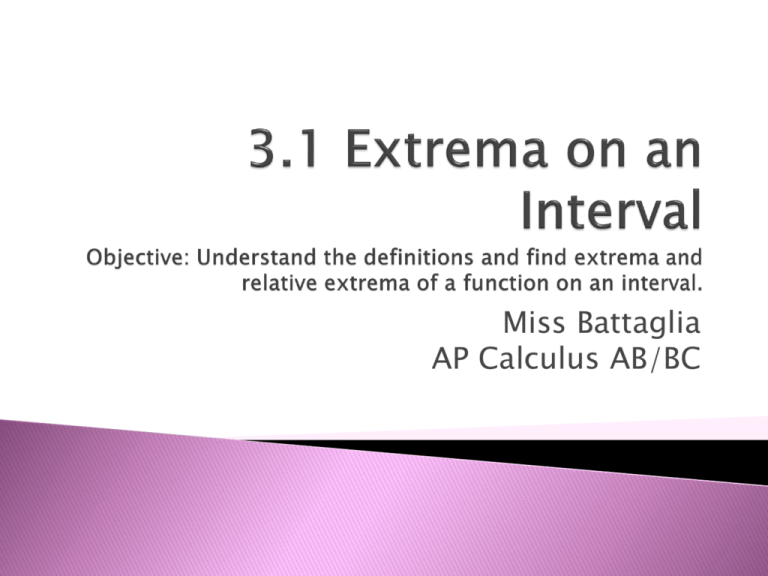
Miss Battaglia AP Calculus AB/BC Min & max are the largest and smallest value that the function takes at a point Let f be defined as an interval I containing c. f(c) is the min of f on I if f(c)<f(x) for all x in I f(c) is the max of f on I if f(c)>f(x) for all x in I Not a max max min f is continuous [-1,2] is closed min f is continuous (-1,2) is open max Not a min g is not continuous [-1,2] is closed If f is continuous on a closed interval [a,b] then f has both a minimum and a maximum on the interval. Think of a relative max as occurring on a “hill” on the graph and a relative min as occurring on a “valley” of a graph. If there is an open interval containing c on which f(c) is a max, then f(c) is called a relative max of f, or you can say f has a relative max at (c,f(c)) If there is an open interval containing c on which f(c) is a min, then f(c) is called a relative min of f, or you can say f has a relative min at (c,f(c)) AKA local max and local min f’(c) = o or undefined What is the value of the derivative at the relative max (3,2)? Find the value of the derivative at the relative min (0,0). Let f be define at c. If f’(c)=0 or if f is not differentiable at c, then c is a critical number of f. c has to be in the domain of f, but does not have to be in the domain of f’. If f has a relative min or a relative max at x=c, then c is a critical number of f. Is the converse true? Think about y=x3.. Is 0 a critical value? Is it a relative min or max? To find the extrema of a continuous function f on a closed interval [a,b], use the following steps: 1. 2. 3. 4. Find the critical numbers of f in (a,b) Evaluate f at each critical number in (a,b) Evaluate f at each endpoint of [a,b] The least of these values is the minimum. The greatest is the maximum. Find the extrema of f(x)=3x4-4x3 on the interval [-1,2] Find the extrema of f(x)=2x-3x2/3 on the interval [-1,3] Find the extrema of f(x)=2sinx – cos2x on the interval [0,2π] Read 3.1 Page 169 #11-27 odd, 39

